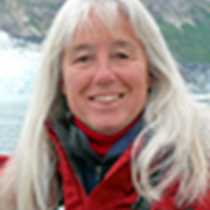On our afternoon walk today, a boardwalk led us suddenly from the forest into the sunshine of an open muskeg area that supports many specialized plants which are well suited and adapted to conditions where few others can survive. Some of these species contain chemicals for protection against hungry grazers. Looking closely, we observed the glistening sticky reddish tentacles on the leaves of the insectivorous sundew plants. Luring and trapping their unsuspecting prey, they have found a way to obtain the nutrients that are so hard to obtain here by secreting digestive enzymes to absorb concentrated ingredients. In this way they are able to compete successfully in a difficult world.
- Daily Expedition Reports
- 26 Jun 2000
From the Sea Lion in Alaska, 6/26/2000, National Geographic Sea Lion
- Aboard the National Geographic Sea Lion
- Alaska
One of the most interesting and unique terrestrial Alaskan habitats is called muskeg,or peatland. These are boggy areas characterized by standing pools of water, sphagnum mosses, many plants from the heather family, stunted and contorted shore pines, and poor drainage. This is a harsh, acidic environment, short on nutrients but rich in moisture and organic material. Bacterial action is inhibited and decomposition is slow. Perched on an impervious mineral layer, the vegetation builds upon itself, acting like a sponge, collecting and storing water like a reservoir.




